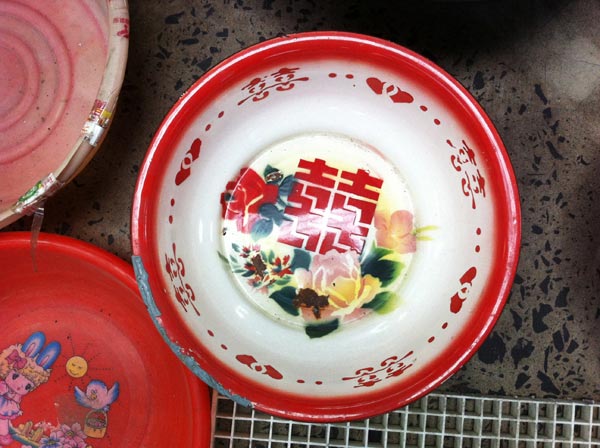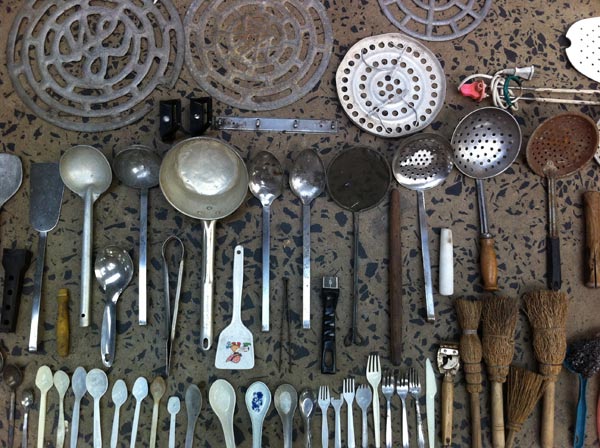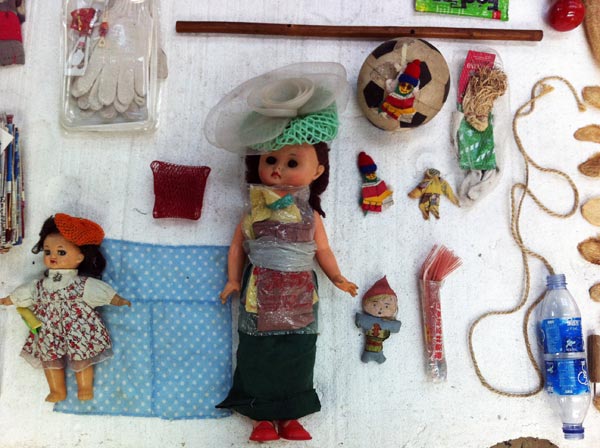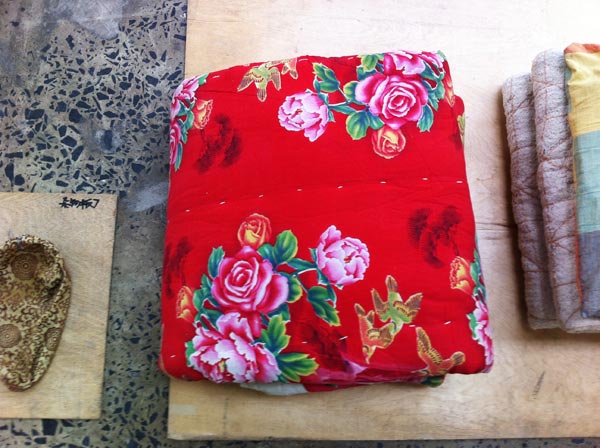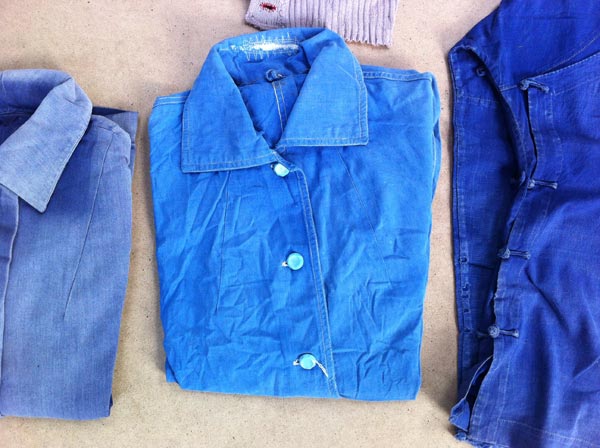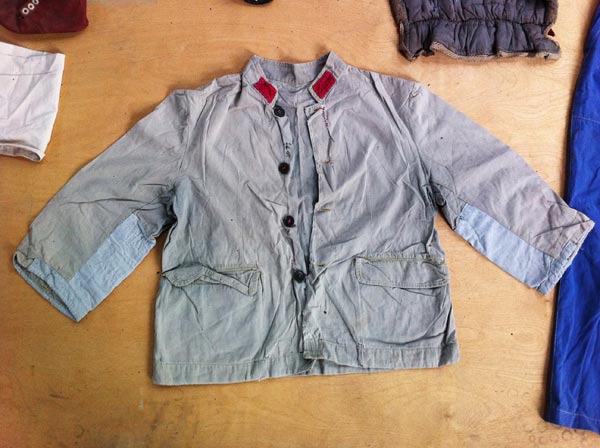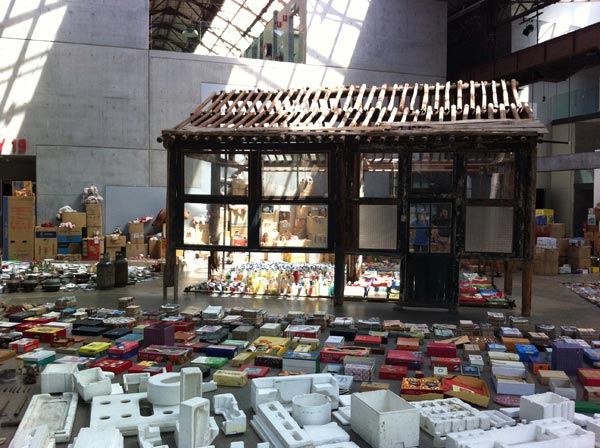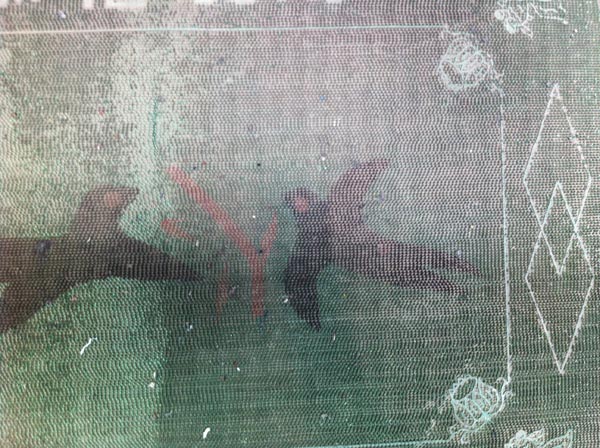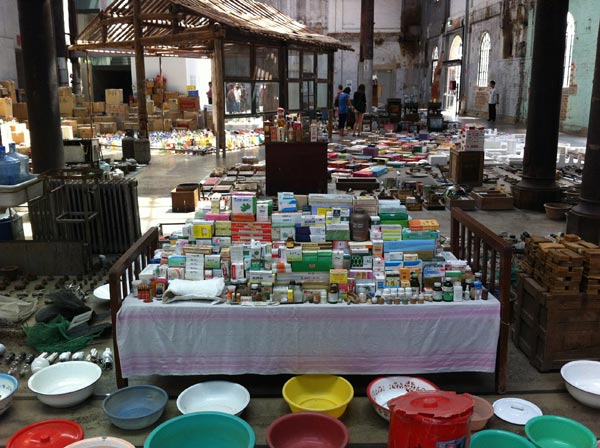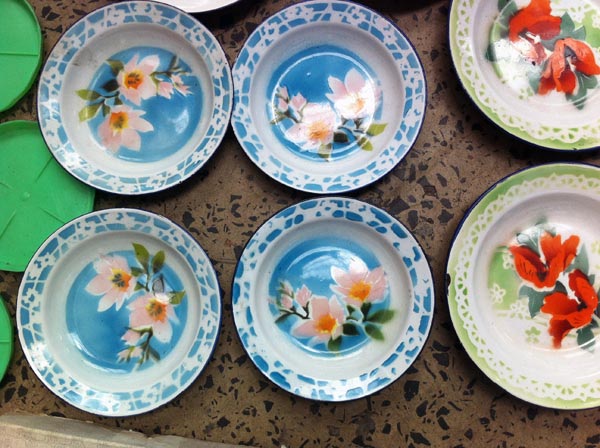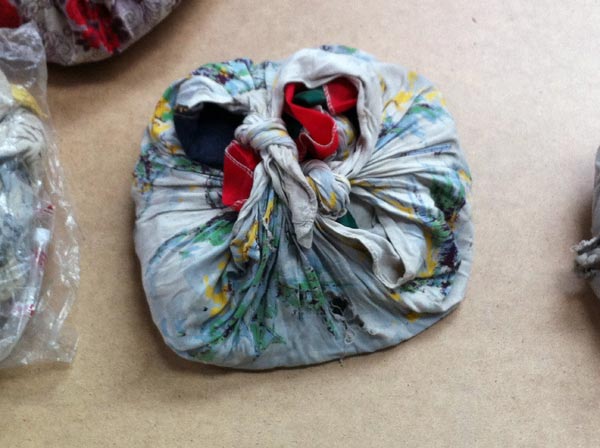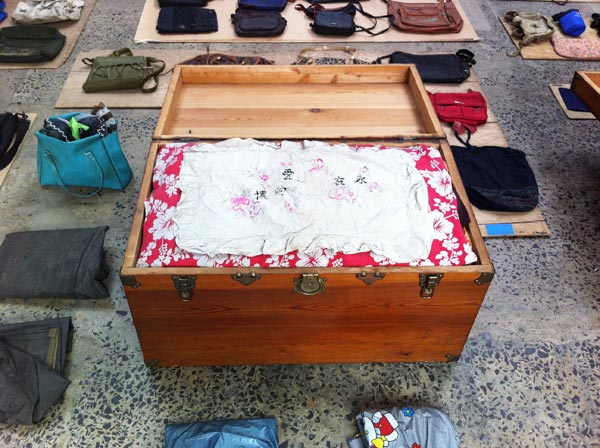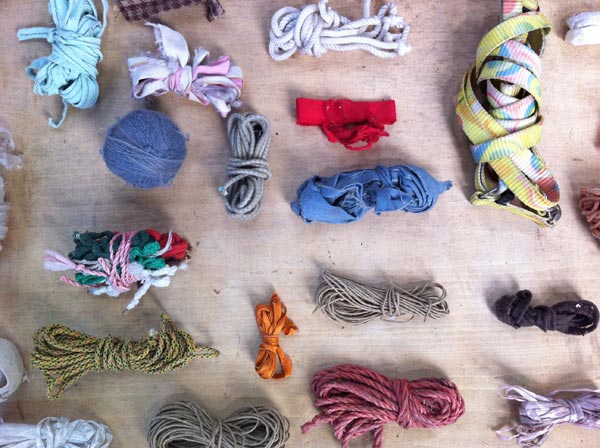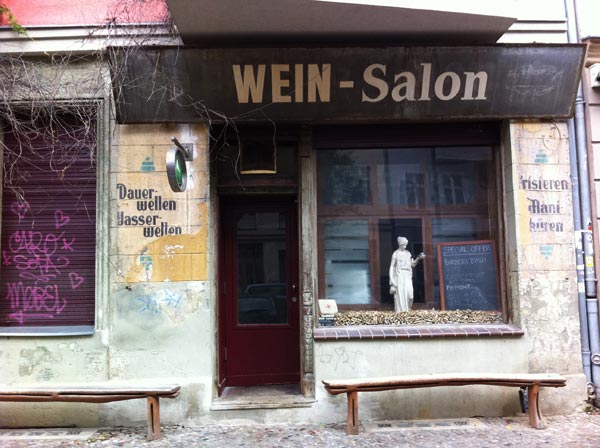Bench
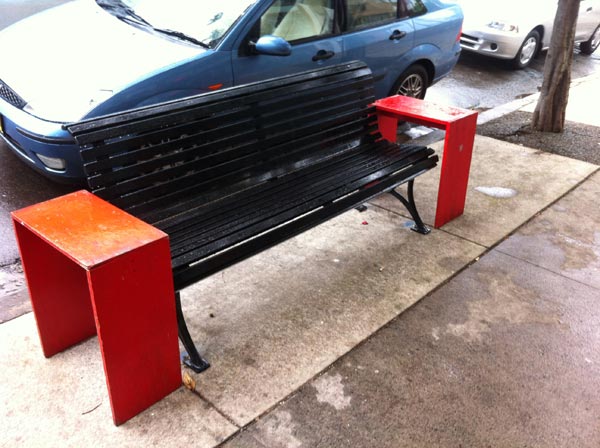
Is there a name for this type of design thinking? It was such a modest intervention I almost didn’t notice this public bench outside a Maroubra (Sydney) cafe. Or rather, I saw a public bench with two places to rest a cup and plate, but didn’t immediately see the elemental charm of the thought that made someone see a piece of city street furniture differently.
Other ways of seeing cities —both simple and complex—will be one of the topics covered in our new, soon-to-be-launched site: Good Habitat.
Redfern Biennale

The Redfern Biennale was a walk-around exhibition on the streets bounding a Redfern Housing Commission precinct. About 60 artists participated. It was organised by local gallery, Damien Minton, and ran for 7 hours on Saturday 8 March. An accompanying essay by Yellam Nre can be read on the gallery’s web site.
Above: Bronwyn Tuohy, Stuck Up
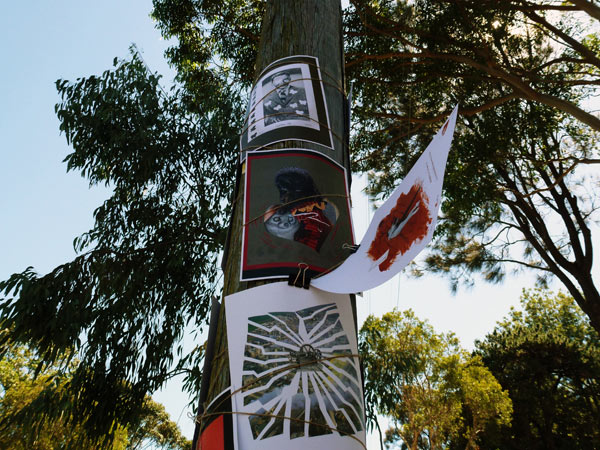
Bronwyn Tuohy
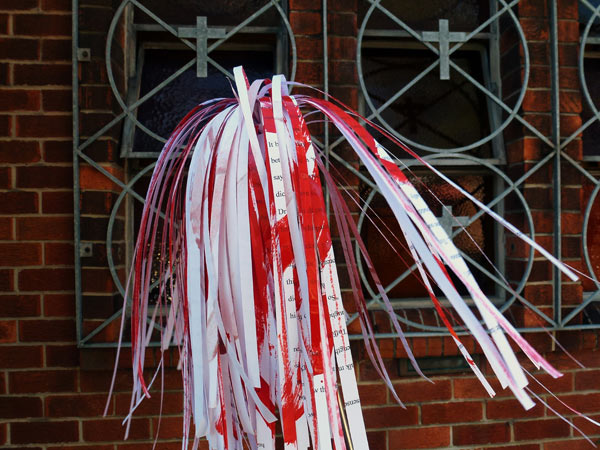
Jim Anderson, Better Red than Read
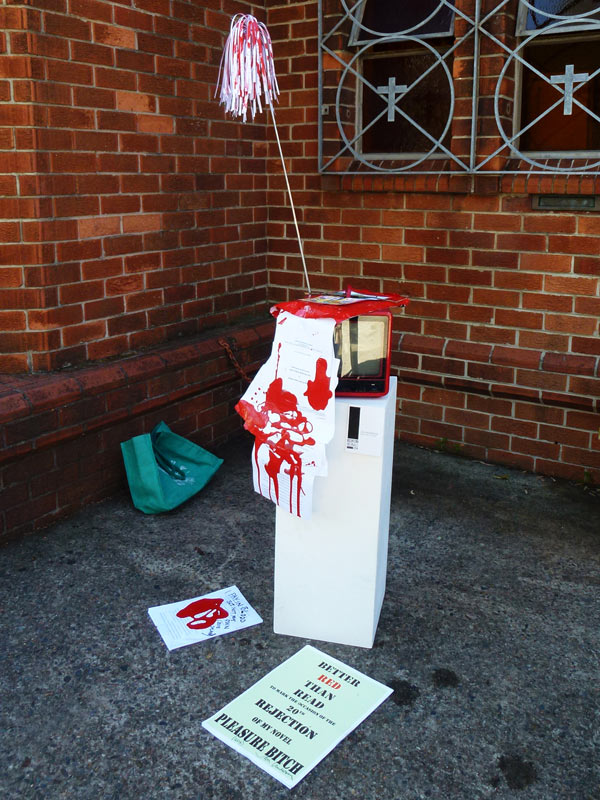
Jim Anderson
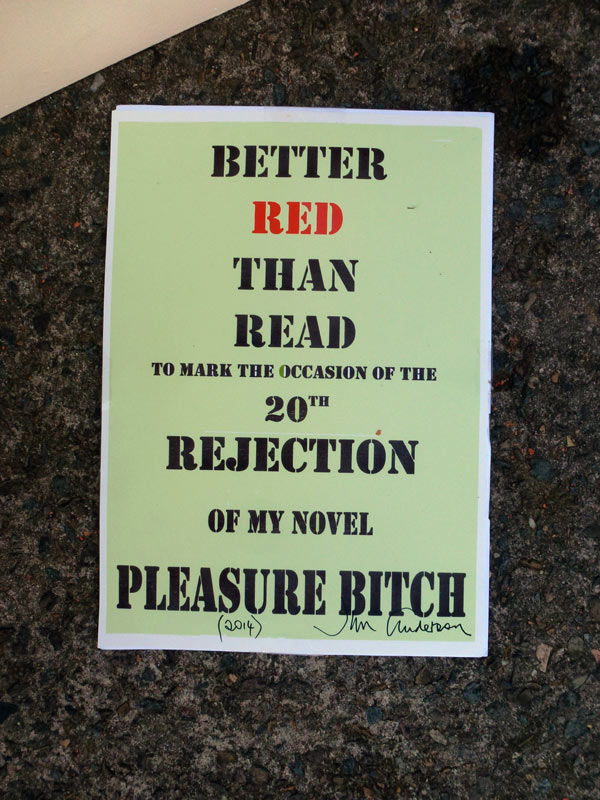
Jim Anderson
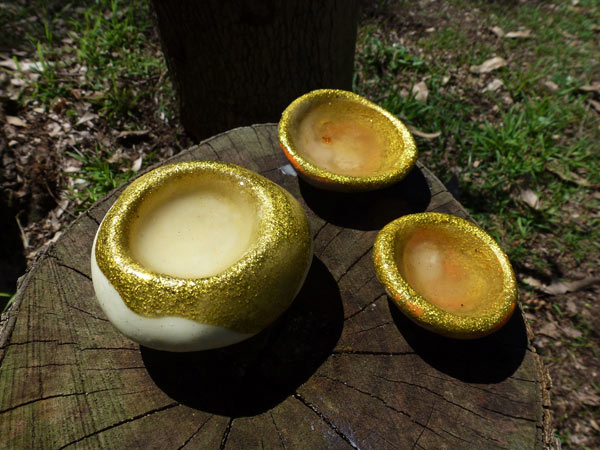
Liane Rossler, For the locals: Bird Bee Butterfly Biennale Buffet
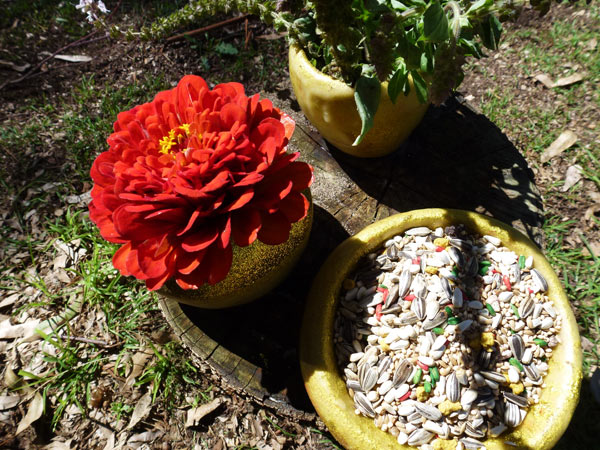
Liane Rossler
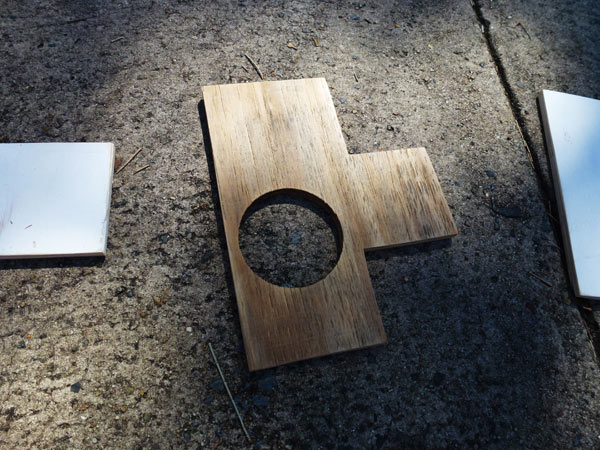
Margaret Roberts, Polygon Landscape (Redfern)
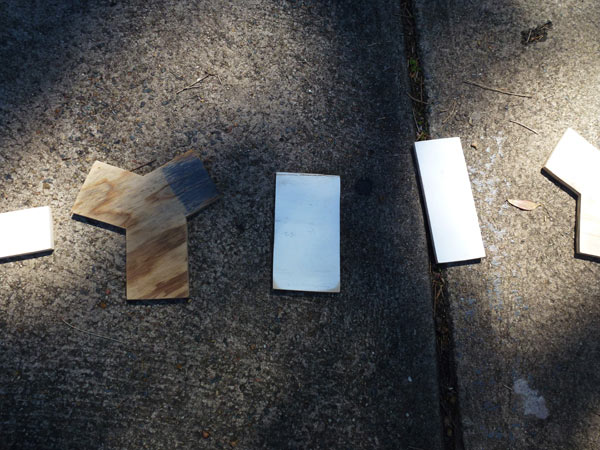
Margaret Roberts
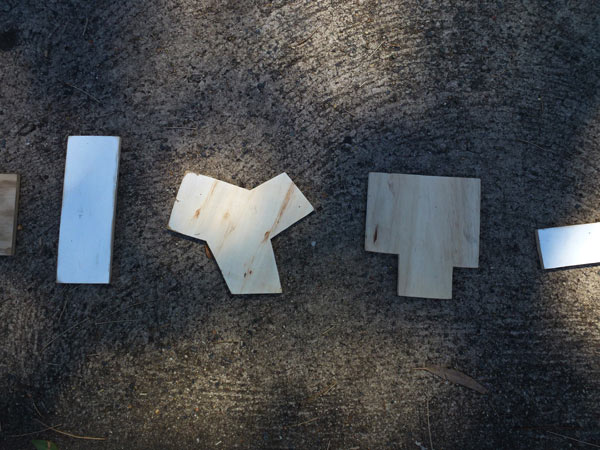
Margaret Roberts
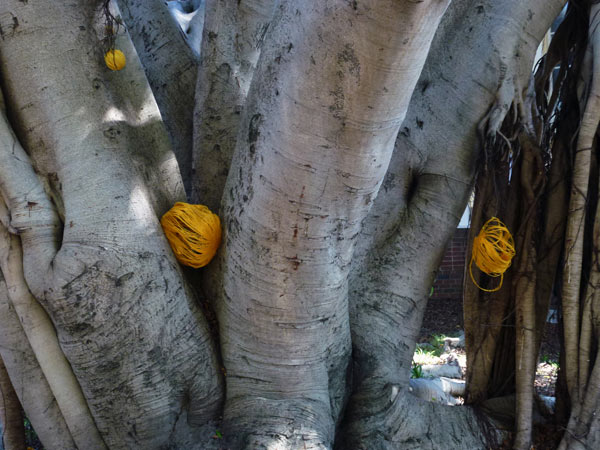
Sara Givins, Tumbling Tumbleweeds
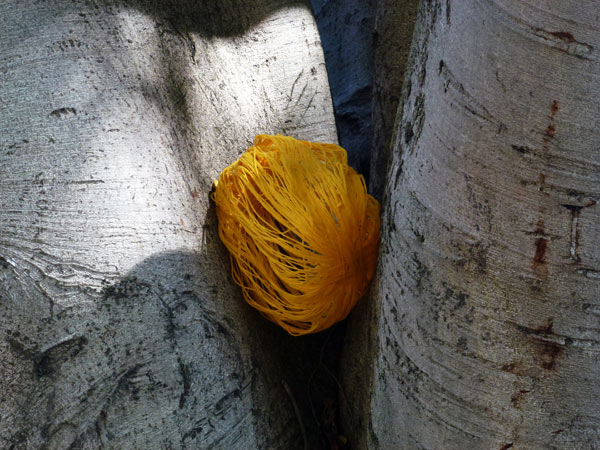
Sara Givins
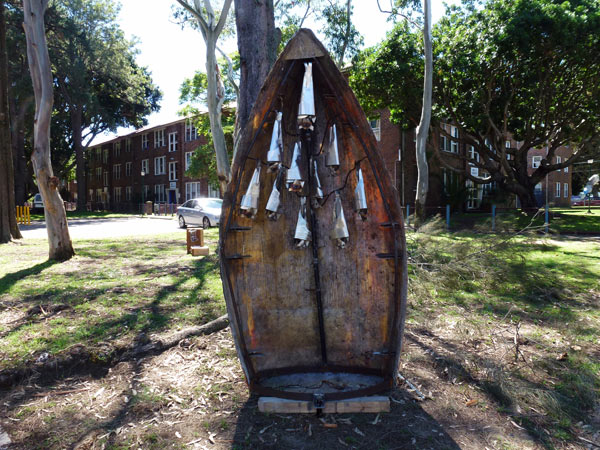
Stephen Coburn, Boat Cave
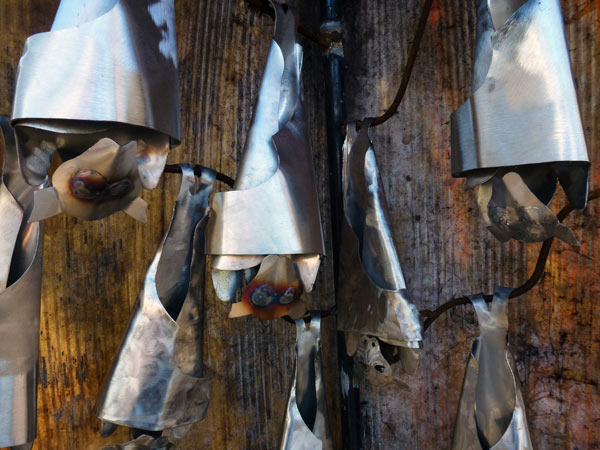
Stephen Coburn
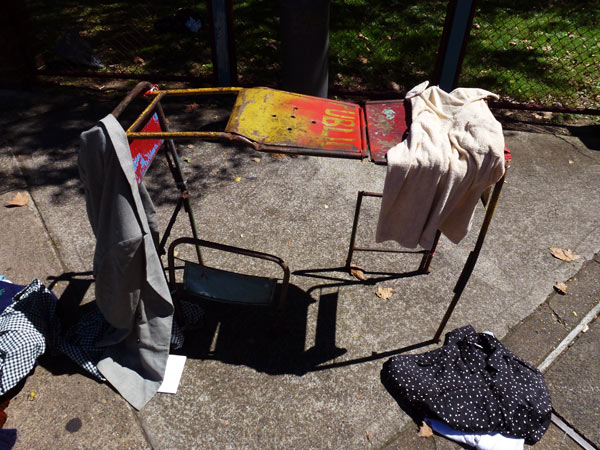
Blake Kendall, I remember she ironed
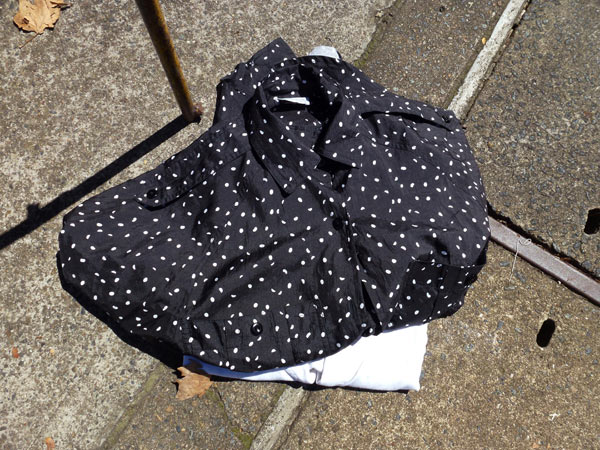
Blake Kendall
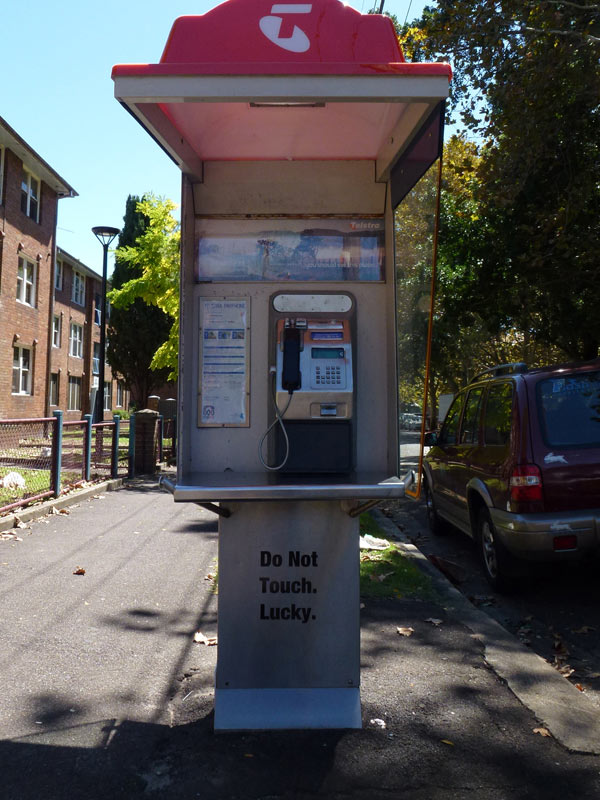
Lynne Barwick, Do Not Ignore It
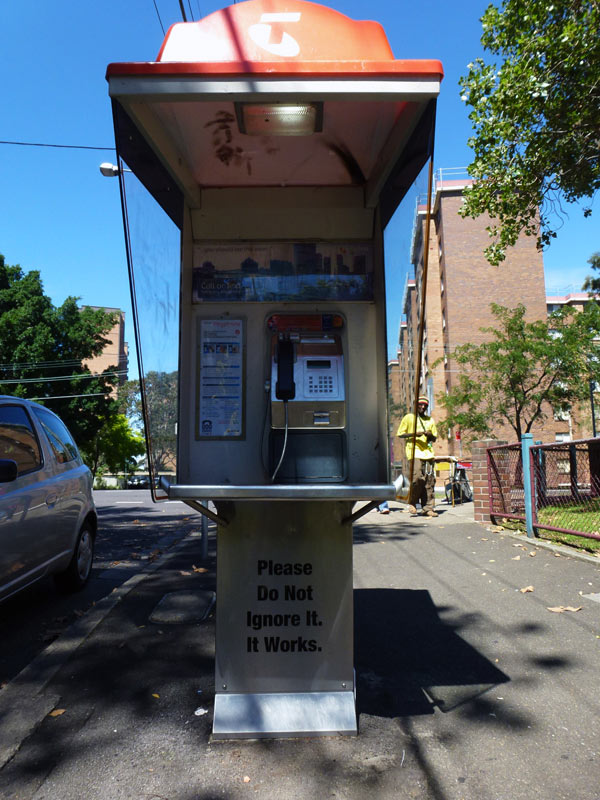
Lynne Barwick
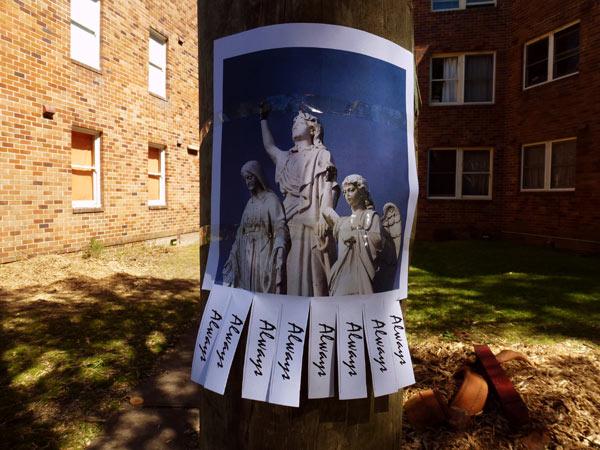
Unknown
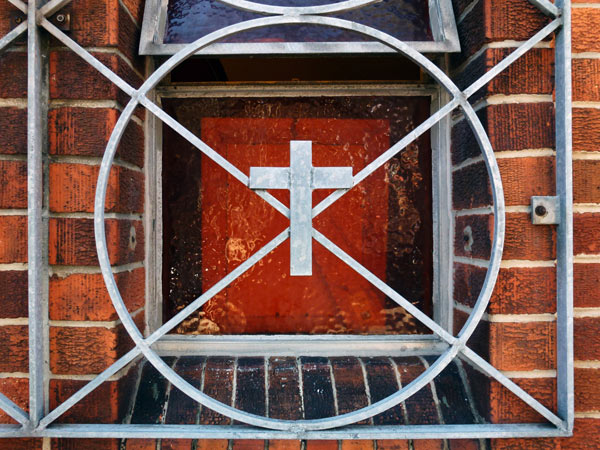
Detail, local church.
Marrickville Open Studio Trail

Marrickville Open Studio Trail (MOST) was a mainly DIY tour program listing 45 artist-run initiatives and galleries on Saturday 1 and Sunday 2 March. It was presented by Marrickville Council as part of Art Month Sydney 2014.
Above: Vicki White, Tinpot Studio, St Peters.
In 2012 the British artist Robert Montgomery (in a work called Echoes of Voices in the High Towers) wrote some text for about 20 advertising billboards around Berlin and the old Tempelhof Airport. The subject of one of them was about place and memory and contained this line in white capitals:
<THIS IS WHAT YOU CAN DO WITH CITIES WHEN YOU LEARN THEM LIKE MUSICAL INSTRUMENTS>
A picture of this billboard appears in this blog in 2 or 3 posts, suggesting I guess, that for me, it keeps hitting the right note. I like the idea of learning cities. Apart from the pleasure of looking at the artwork, I’m sure this is the appeal of programs like MOST: walk, look at buildings, check out shops, eat in a different cafe, ride a less familiar train line, see where people work, see what they make, talk to them about why they do it.
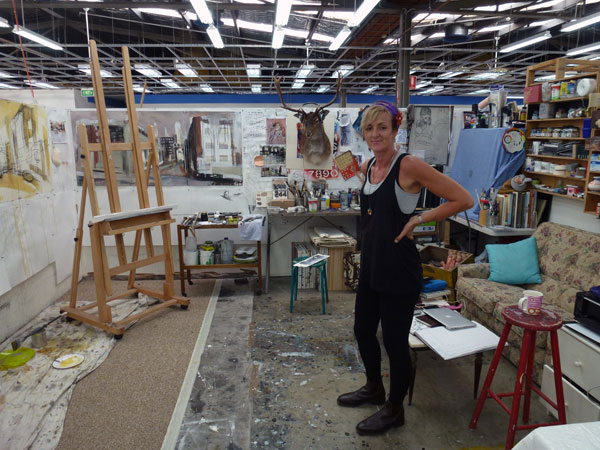
Jody Graham, May Street Studios, St Peters.
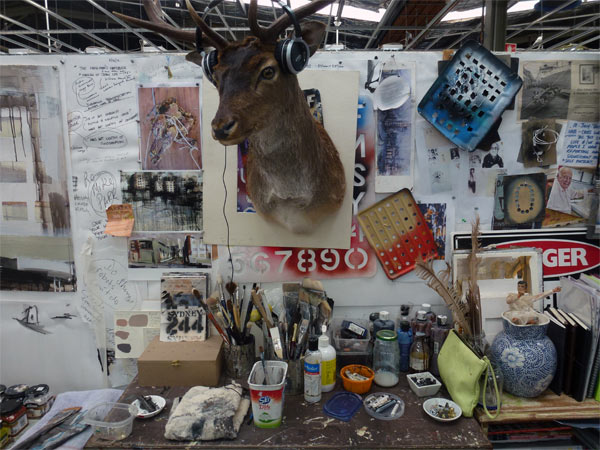
Jody Graham’s studio.
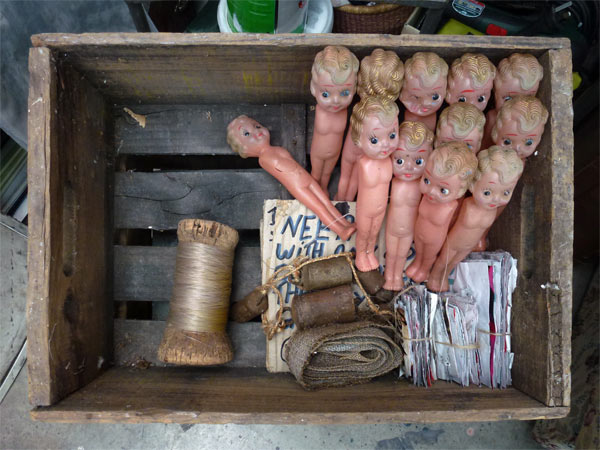
Jody Graham’s studio.
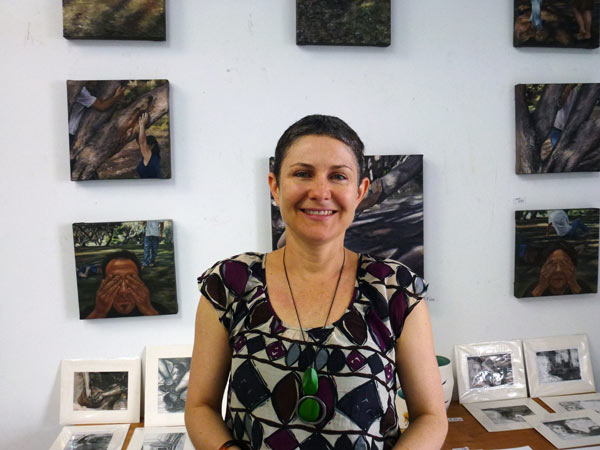
Vicki White, Tinpot Studio, Edith Street, St Peters.
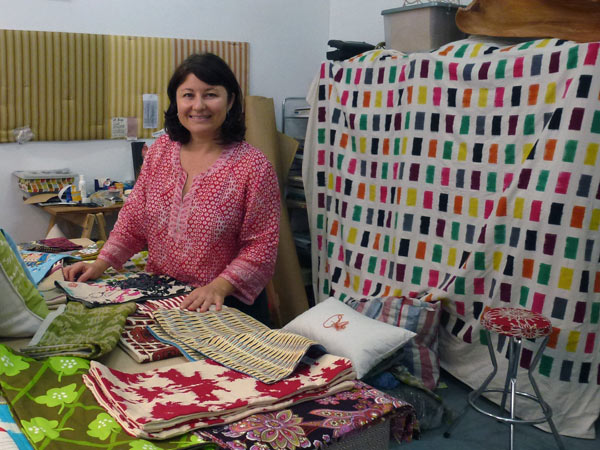
Catherine White, Tinpot Studio
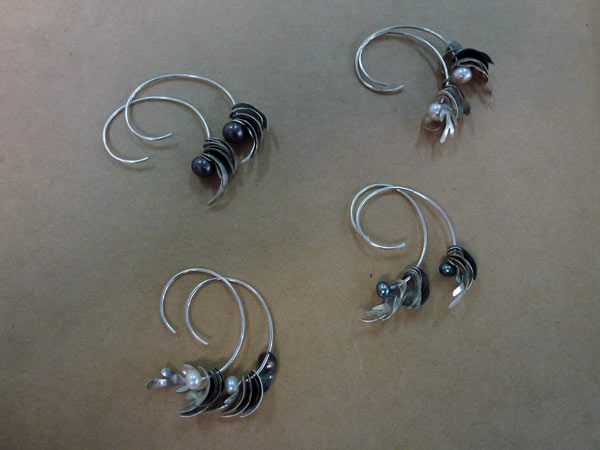
Jewellery by Catherine White
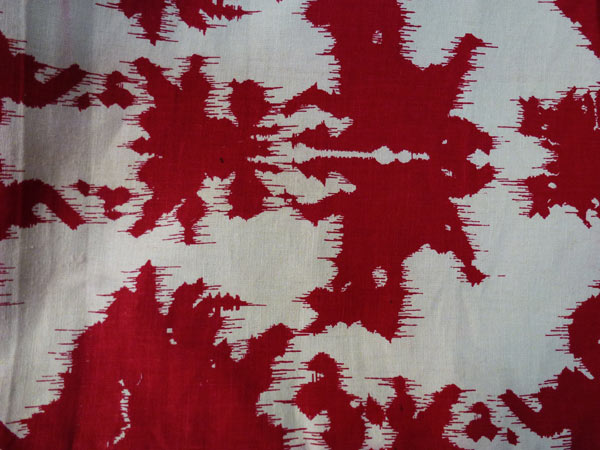
Bag by Catherine White. (Textile designer unknown).
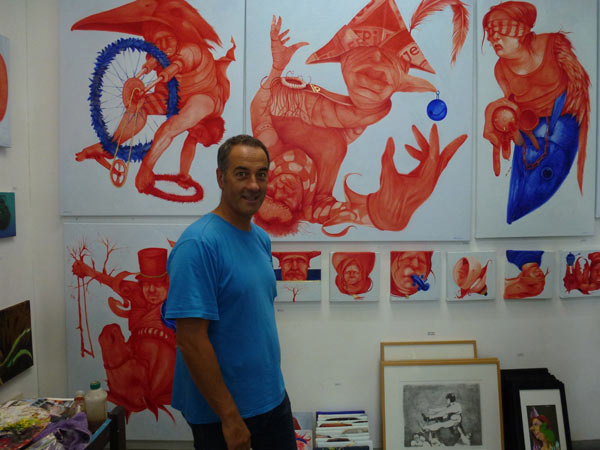
Eric Lobbecke, Tinpot Studio.
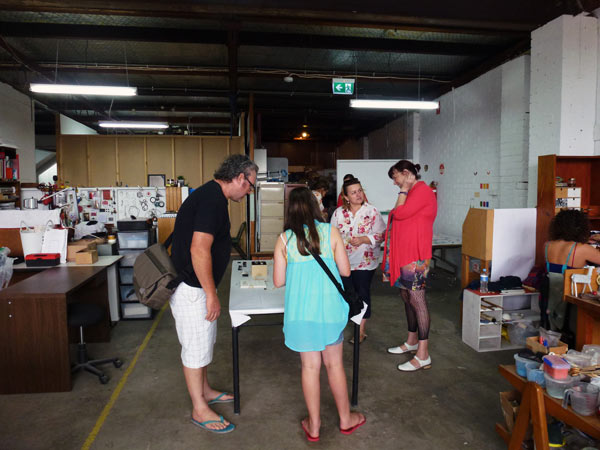
Squarepeg Studios, Junction Street, Marrickville.

Squarepeg Studios.
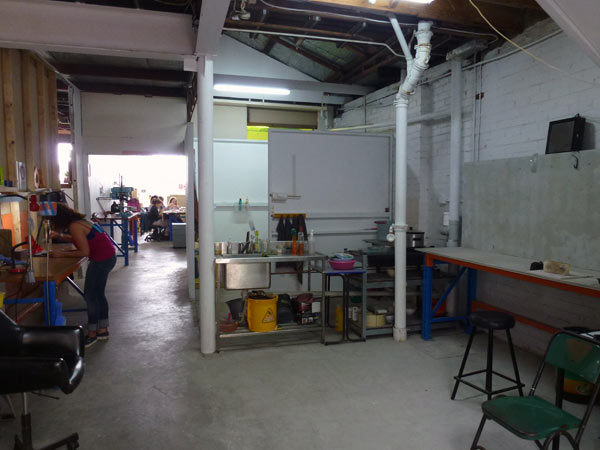
Squarepeg Studios.
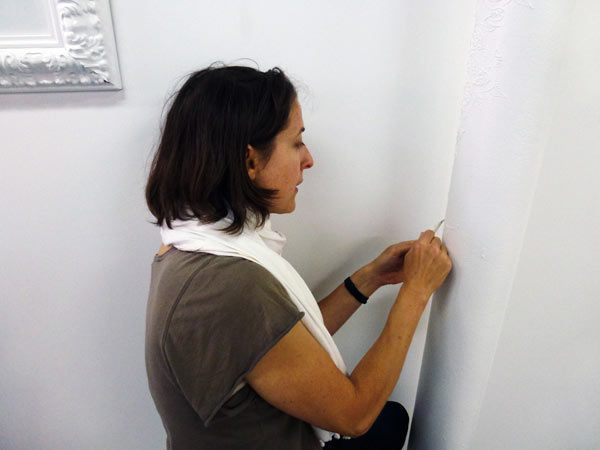
Matina Bourmas, Airspace Projects, Junction Street, Marrickville.
Matina Bourmas, Icy Pole, 2014.
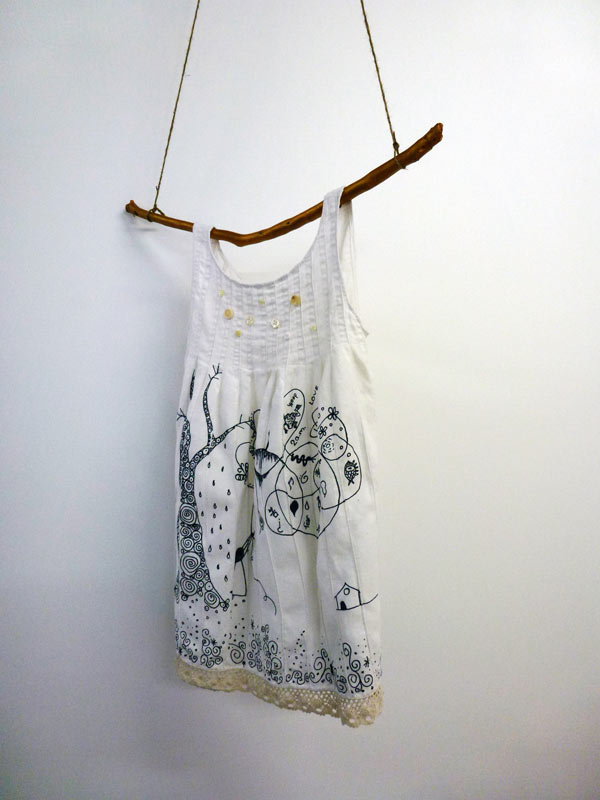
Airspace Projects, Dawn-Joy Leong, Doodle Dreams, 2013.
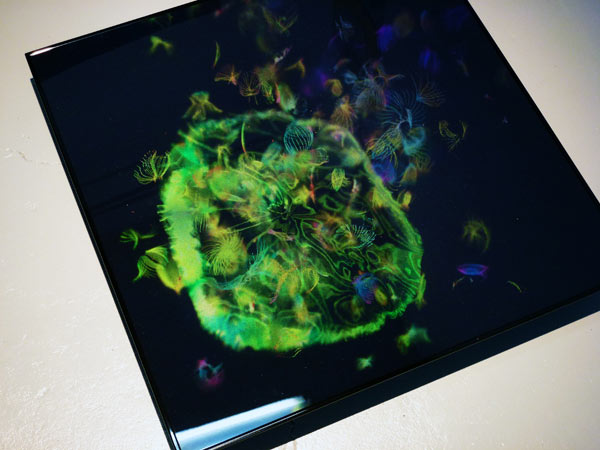
Airspace Projects, Paula Dawson, Hyper object: Homeland, 2013.
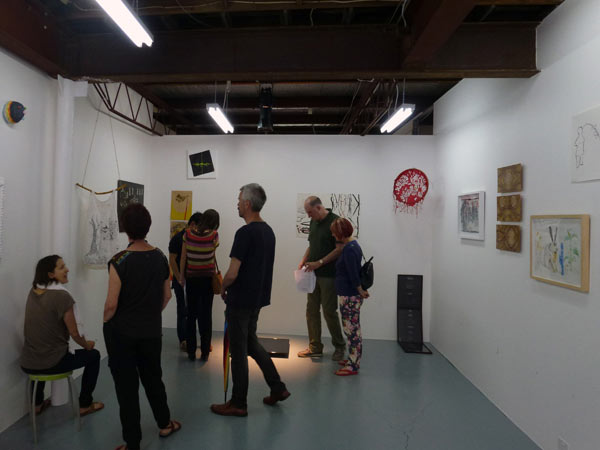
Airspace Projects
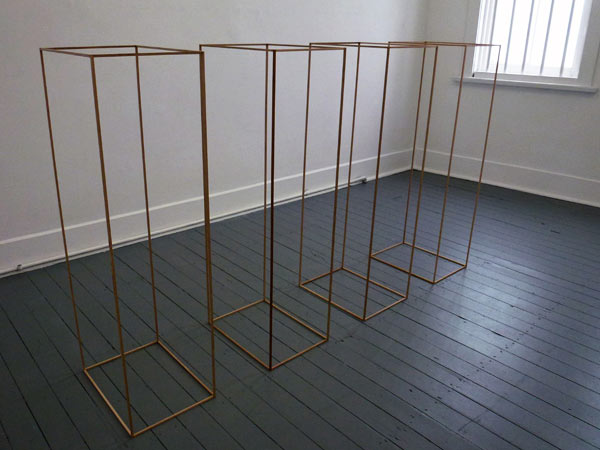
SNO, Marrickville Road, Marrickville.
Susie Idiens, Passage, 2014
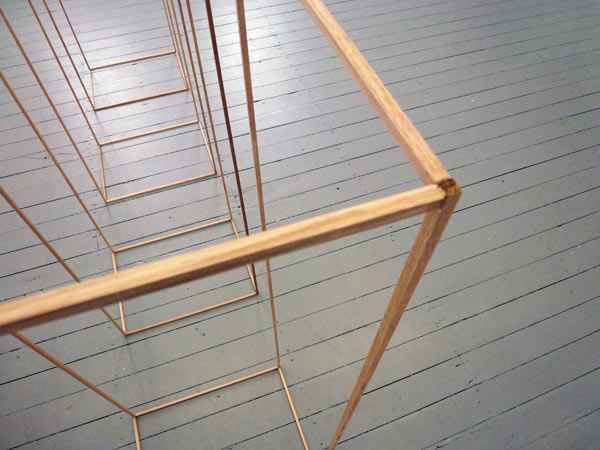
Susie Idiens, Passage, 2014
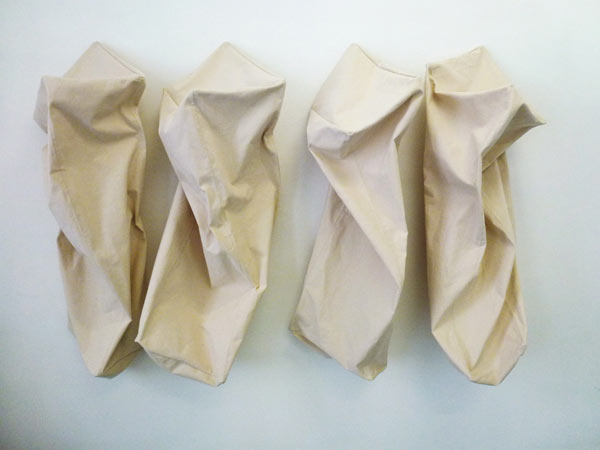
Susie Idiens, Passage, 2014
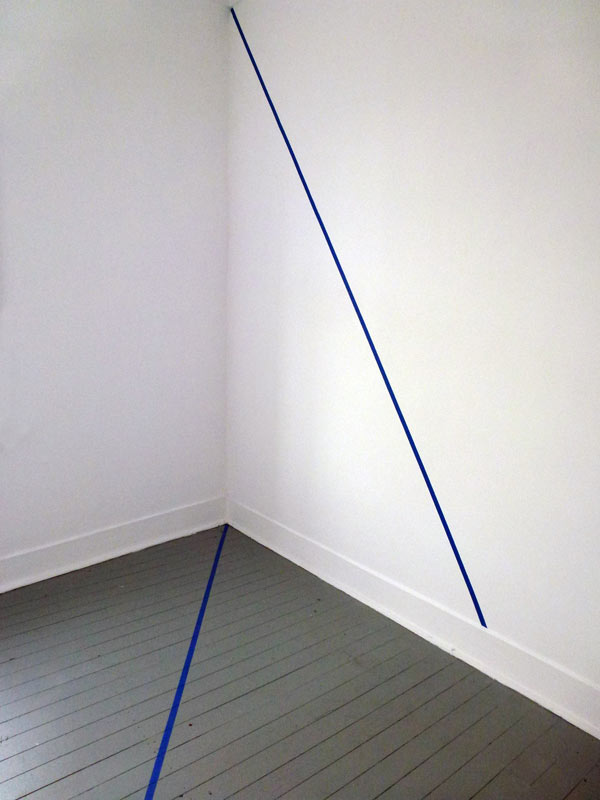
SNO, Kelley Stapleton, Two lines and a jump rope, 2013.
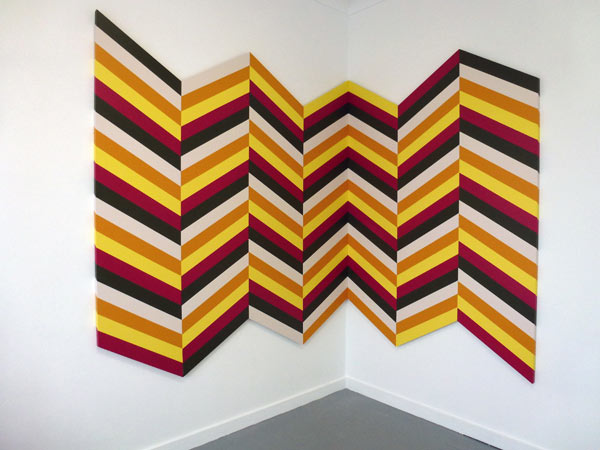
SNO, Sophia Egarchos, Step into You, 2014.
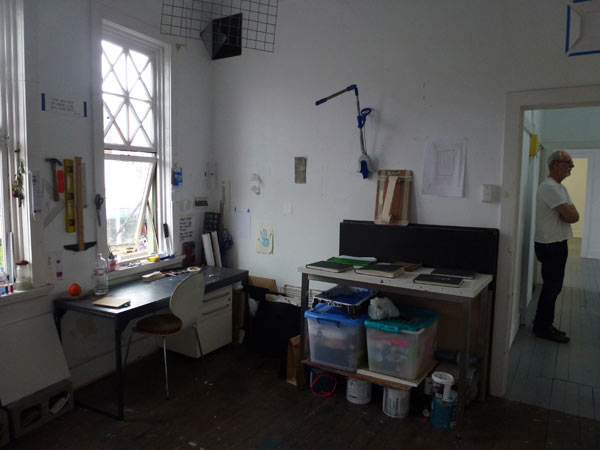
SNO, workroom.
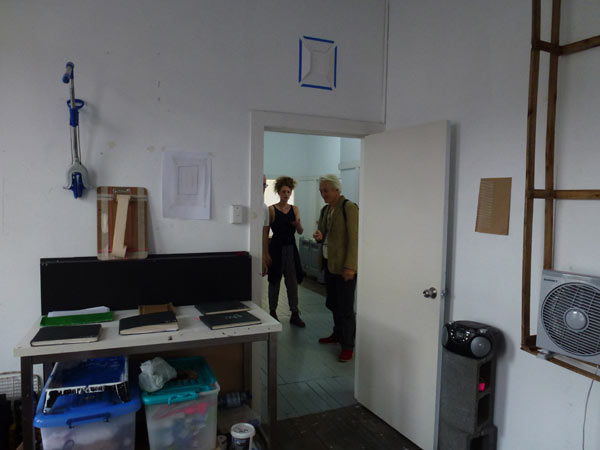
SNO workroom; Kelly Stapleton talking to MOST visitor.
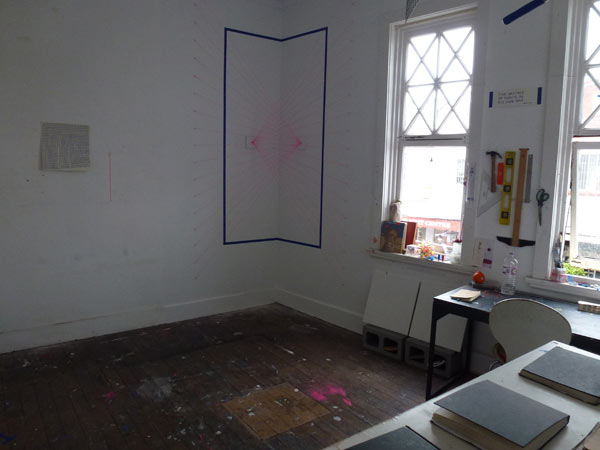
SNO, workroom.
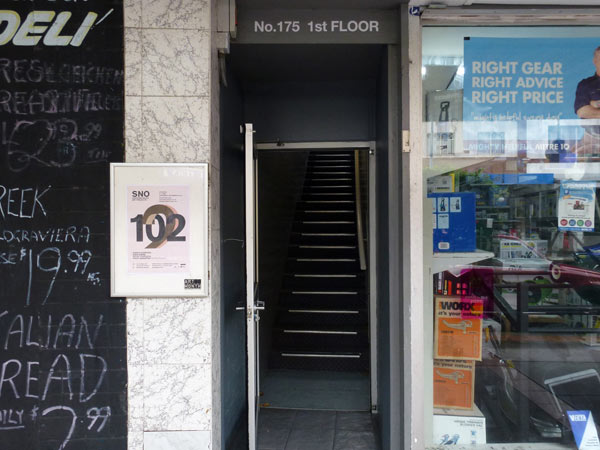
SNO, street entry.
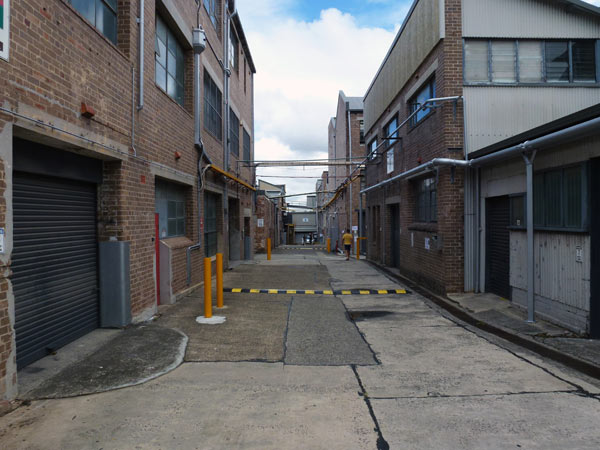
Tinpot Studio, street entry.
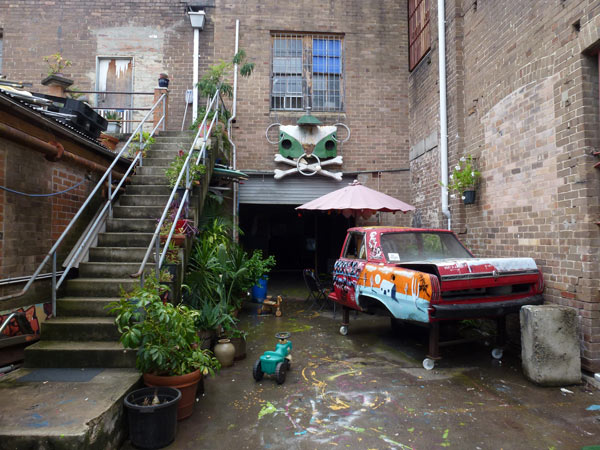
Tortuga Studios, backyard.
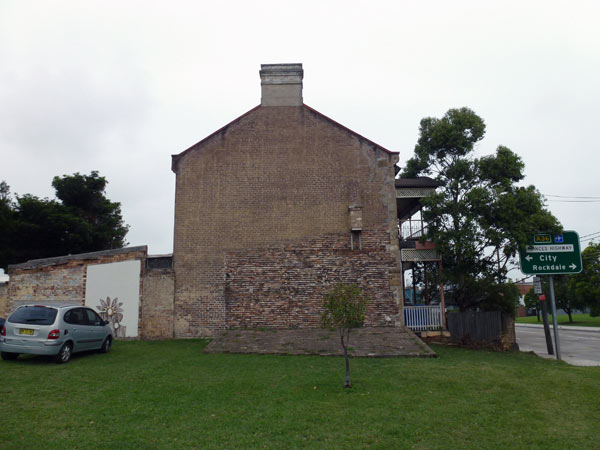
Stone Villa Studios, nice blank wall.
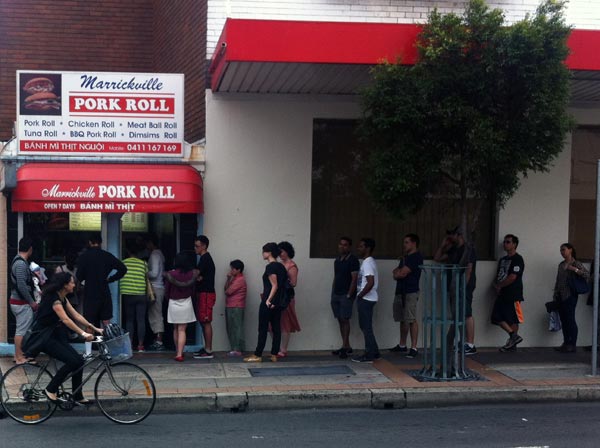
Must be doing something right.
Marrickville Pork Roll, Illawarra Road, Marrickville.
raumlaborberlin in Sydney
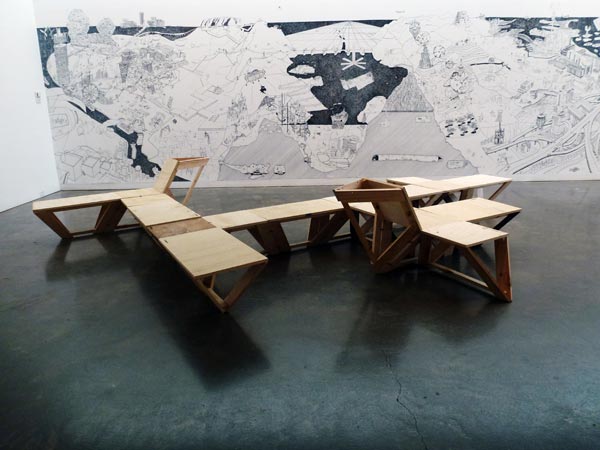
User Generated Architecture
Works by raumlaborberlin in collaboration with locals.
Curated by Joni Taylor
Tin Sheds Gallery, University of Sydney
until 15 November 2013
Stick on City
Wallpaper, timelapse videoloop 2013
The Generator
Mobile furniture made from plywood, recycled wood, cable-ties.
(Created as part of the raumlaborberlin Generator workshop, 13–14 October) 2013
Not shown here are their wonderful videos!
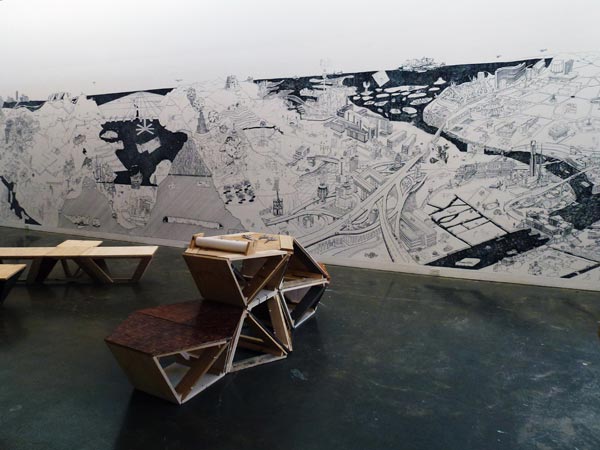
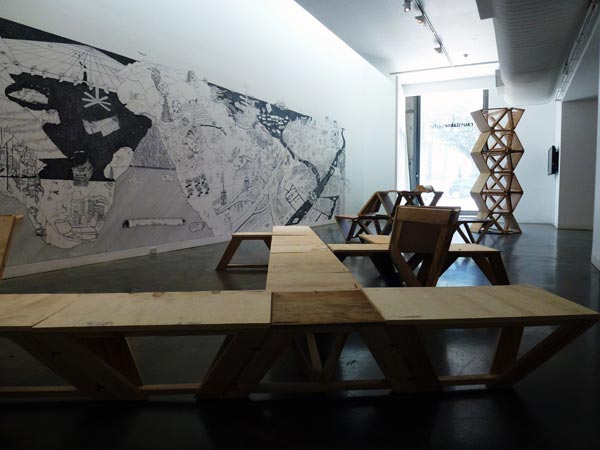
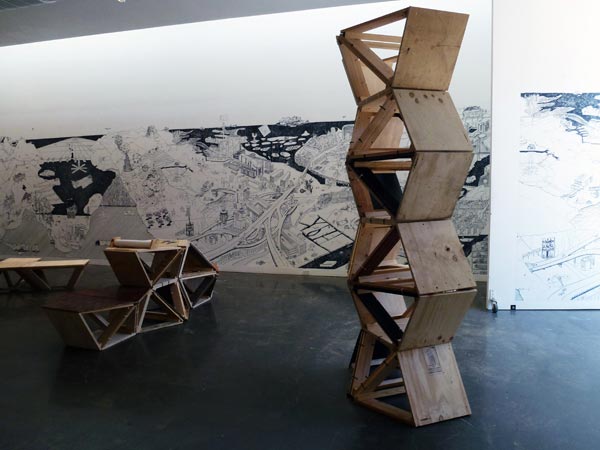
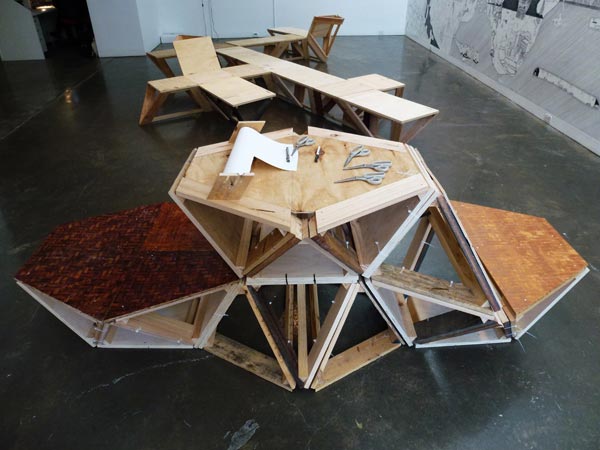
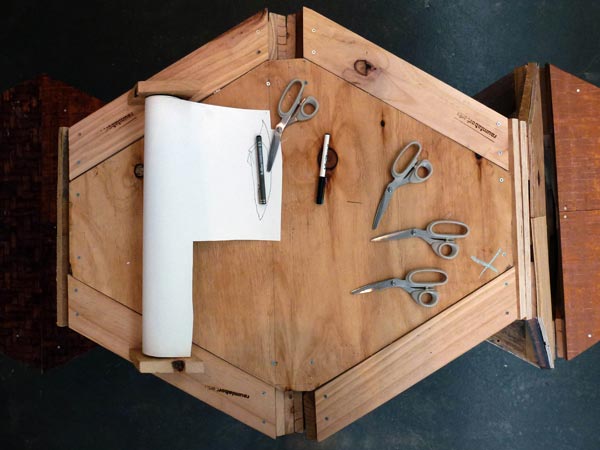
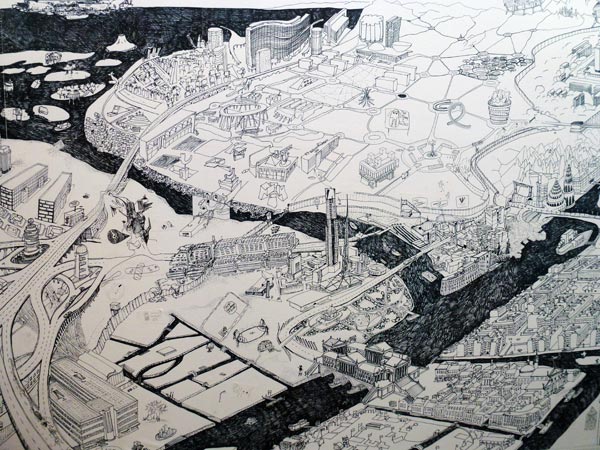
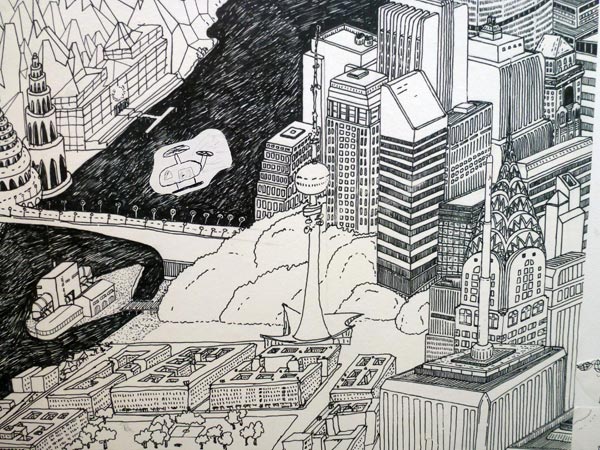
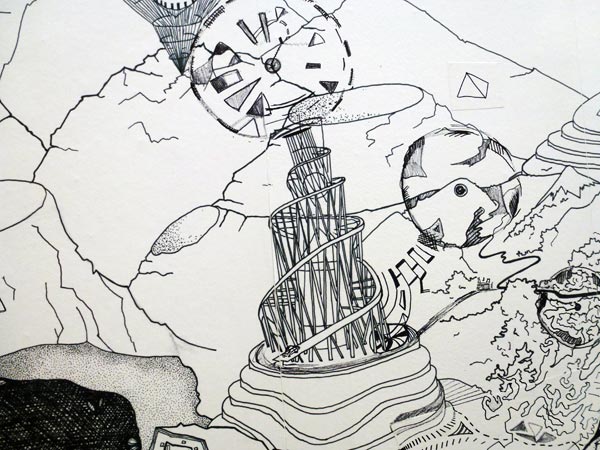
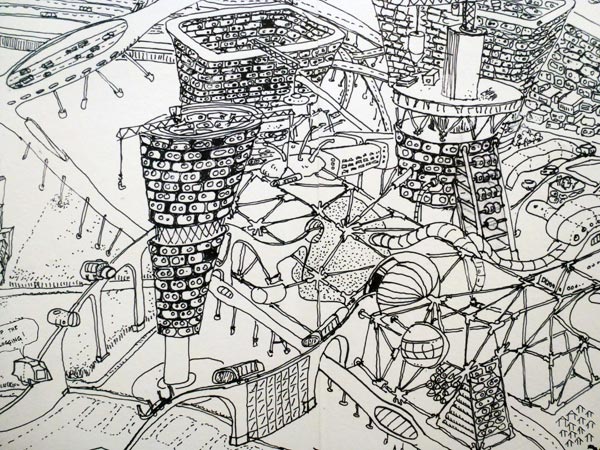
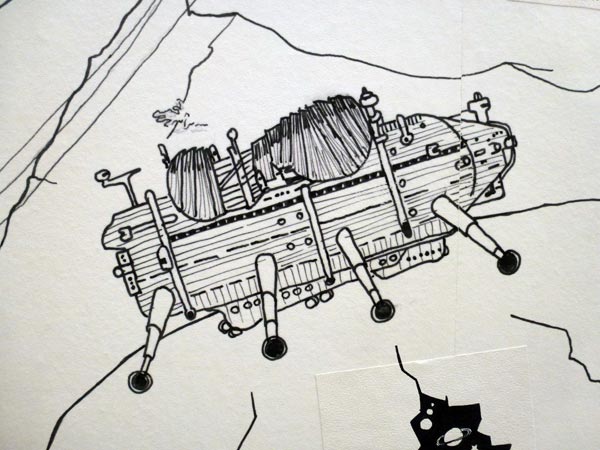
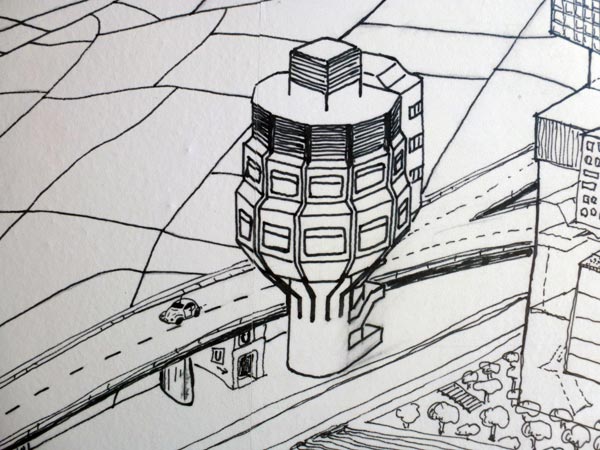
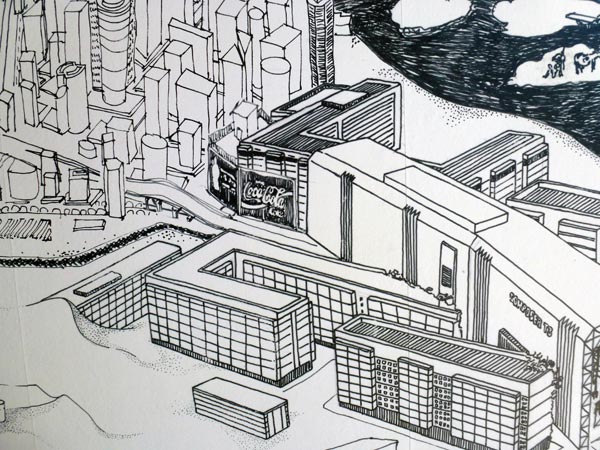
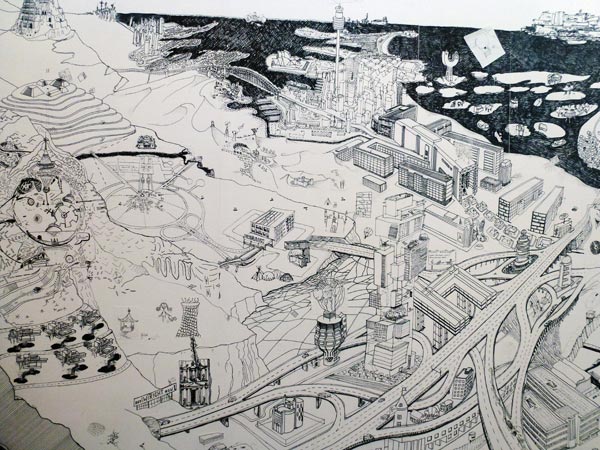
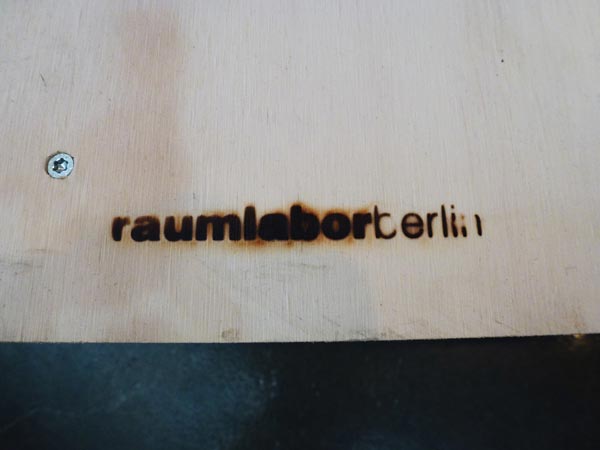
x
Reading cities
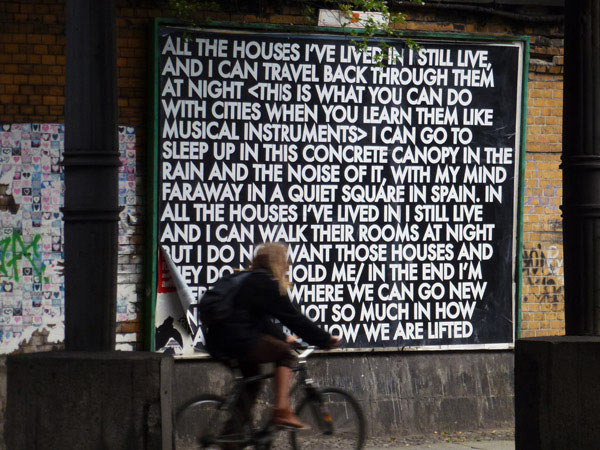
Echoes of Voices in the High Towers, Robert Montgomery at the former Tempelhof Airport, Stattbad Wedding and 20 billboards across Berlin. July–October 2012. Presented by Neue Berliner Räume.
Reading Cities
A city may be read through its geography, its infrastructure and social structures, its propensity for happiness (or gloom), the quality of its food or manufactures, the attractions it offers tourists, the stories of the lives of its inhabitants, its number of days of sunshine, its ability to make trains run on time, the record of its triumphs and catastrophes… many things.
It can also be read in less direct ways; avoiding the indexes through which cities are typically assessed.
Displacement, incongruity, impermanence, the vast worlds hidden in small gestures and modest objects, emptiness, incompleteness, uncertainty, accidents and incidents of happy chance, the silences and false starts intrinsic to creative process; the dead ends of the day’s challenges; the beauty of melancholy; and all those things thought of as poetic and inevitably regarded as useless are also the things from which new understandings and richer definitions of ‘city’ emerge:
lab city;
screen city;
garden city;
kitchen city;
city as dance;
city as palimpsest;
city as artwork or gallery;
city that reads as a chronicle of longings;
city you can learn like a musical instrument.
When we travel to other places, more often than not we spend much of our time in cities. It’s not only the speed and energy of the world’s great cities that attracts us but also their ability to slow us down, to intensify perception, and allow us to have a sense of the gift of things we may otherwise overlook or undervalue.
x
Running the City
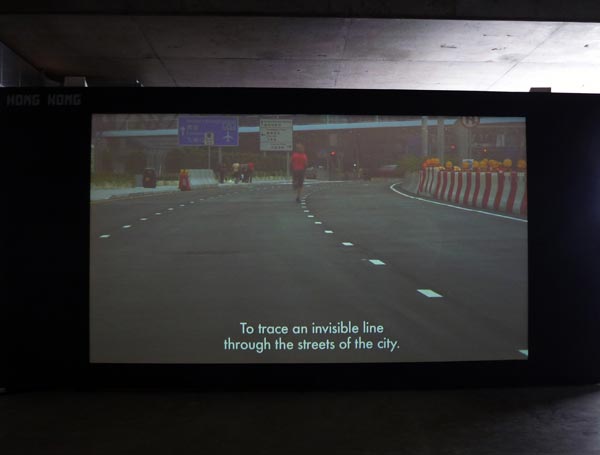
‘the city is like a pinball table’; ‘a giant assemblage of prefabricated obstacles’; ‘social space’; ‘to loot space and time’; ‘to be suspicious’; ‘ non linear fragments used for the construction of memory’; newscape’; ‘porous city’; ‘to become invisible for just a few minutes’.
Runscape (Hong Kong), 2010
Single channel HD video, 24:18 mins
Laurent Gutierrez, Valerie Portfaix
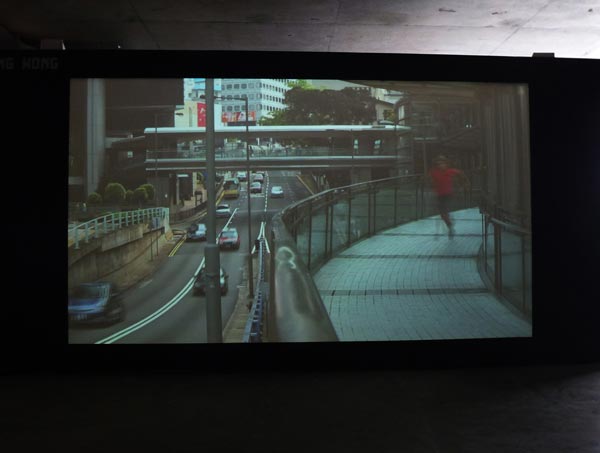

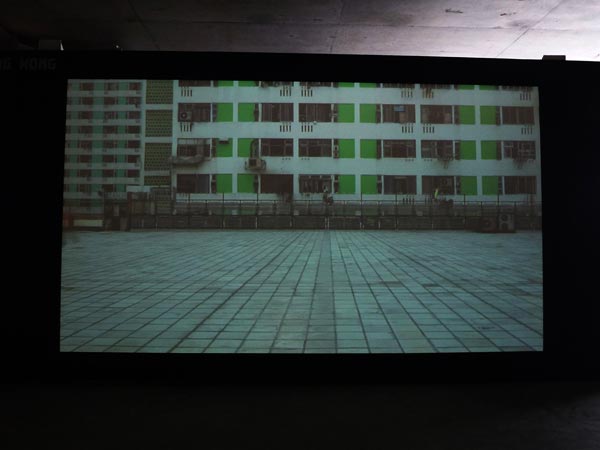
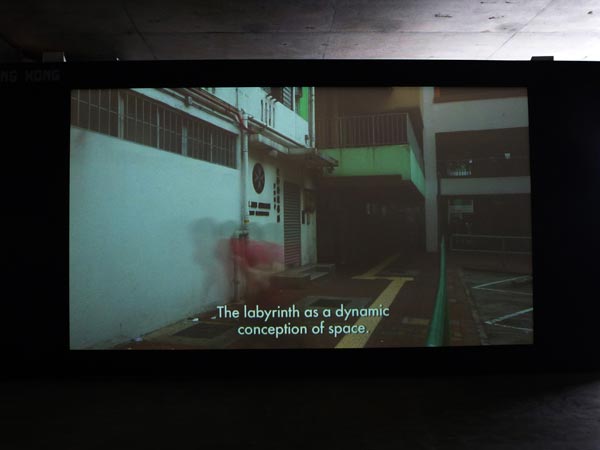
x
Learning cities
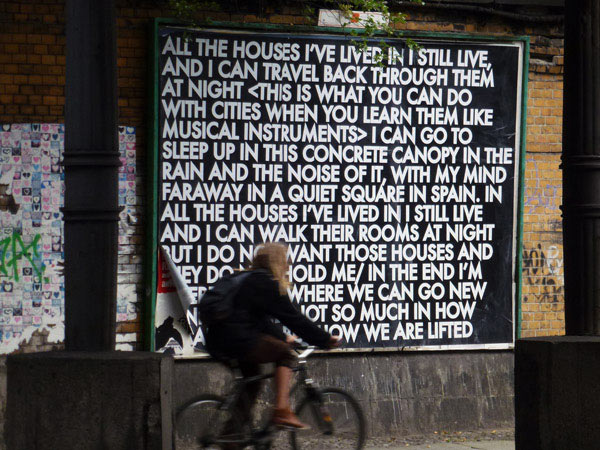
In Germany again for 6 weeks then 1 week in Tokyo.
British artist, Robert Montgomery’s installations can be seen in public spaces around Berlin—on billboards and at the former airport, Tempelhof. The posters have been up since July and are looking a bit rough around the edges—but I like that. What isn’t rough around the edges is his language. I like that: a lot.
Robert Montgomery
Echoes of Voices in the High Towers
Presented by Neue Berliner Räume
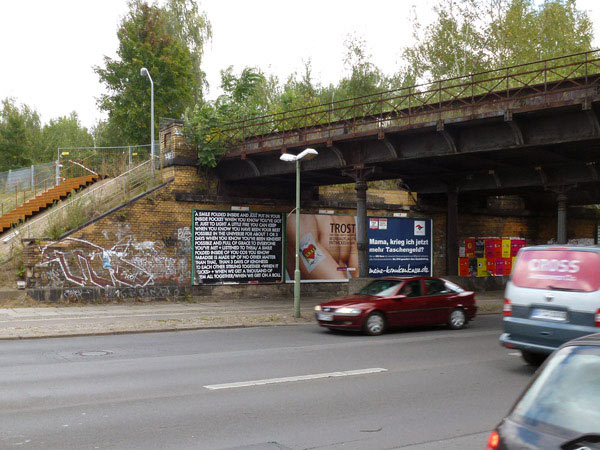
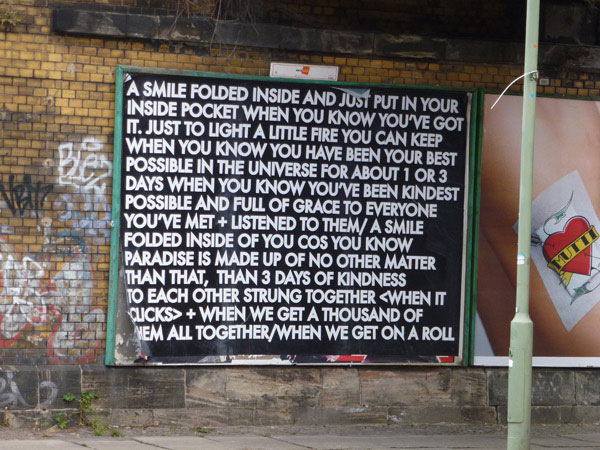
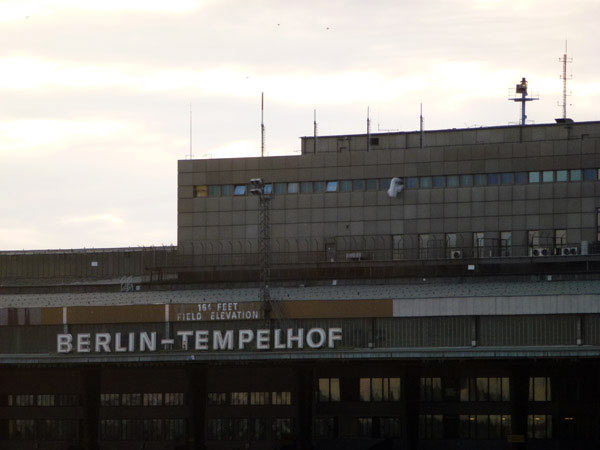
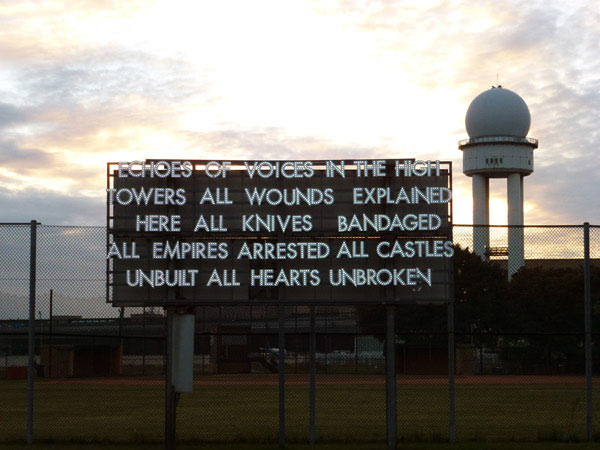
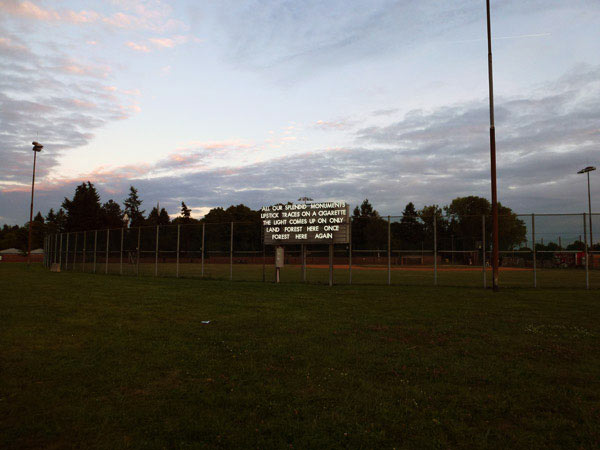
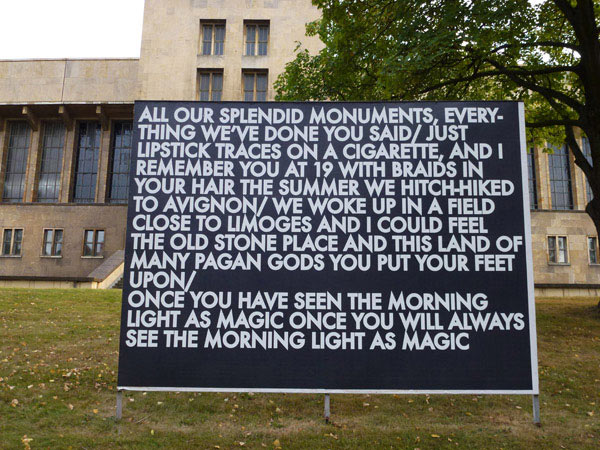
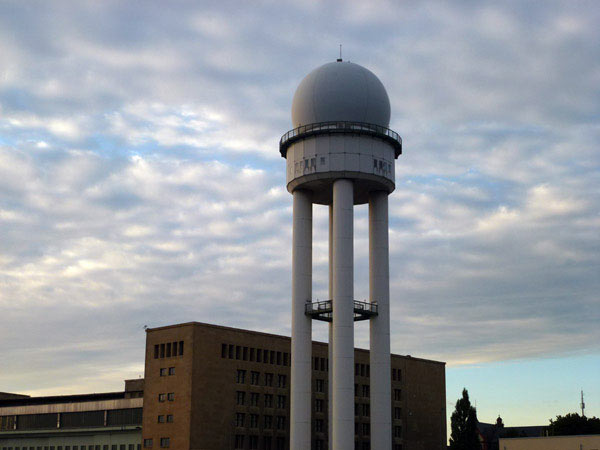
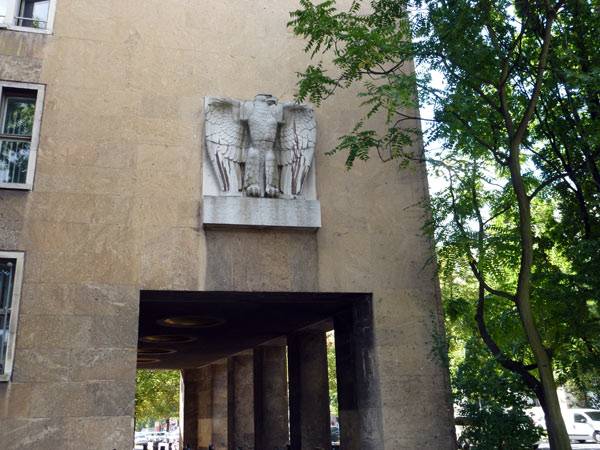
x
Please disturb
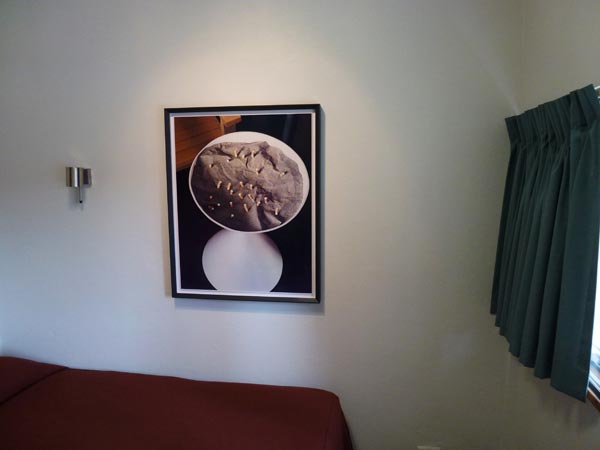
Graeme Smith: Thomas Demand, The Dailies, with contributions by Louis Begley and Miuccia Prada, Kaldor Public Art Projects, Commercial Travellers’ Association (CTA), MLC Centre, Martin Place, Sydney, March 23-April 22.
For better exhibition photography than mine please visit RealTime 109, June 2012.
Observation
When Sydney people walk into an unfamiliar room the first thing they do is head for the window. Everything—including the art on the walls—is sized up only after a quick assessment of the quality of the view. Sydney is a view city—even beyond white yachts bobbing on a sparkling harbour.
The ‘Rear Window’ effect of looking into the rooms of others, the lovely mute blankness of windowless brick, a neighbour’s frangipani or the shiny seduction of a retail strip all make good views, as they would in other cities, but in Sydney it’s more important. The view reigns. Sydney seems to look outwards; looking inwards is inappropriate behaviour. Disturbing. As is randomly opening the door to a hotel room you haven’t booked.
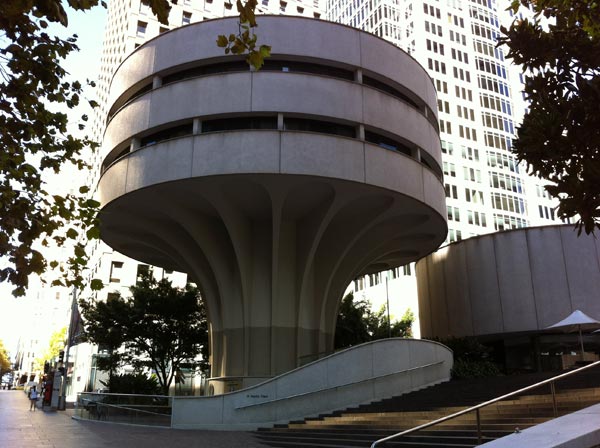
The Commercial Travellers’ Association houses a little-known, little hotel—a mid-70s Harry Seidler designed concrete mushroom in the centre of Sydney’s financial district. On one of the above ground floors, 16 little bedrooms look out radially onto the high-end retail and grand bank facades of Castlereagh Street and Martin Place. This was the setting for German artist Thomas Demand’s, The Dailies, and where a polite attendant in black invited me to start anywhere—so I opened the door to room 413 and went to the window.
Through the window
Prada, in an Art Deco building, Martin Place.
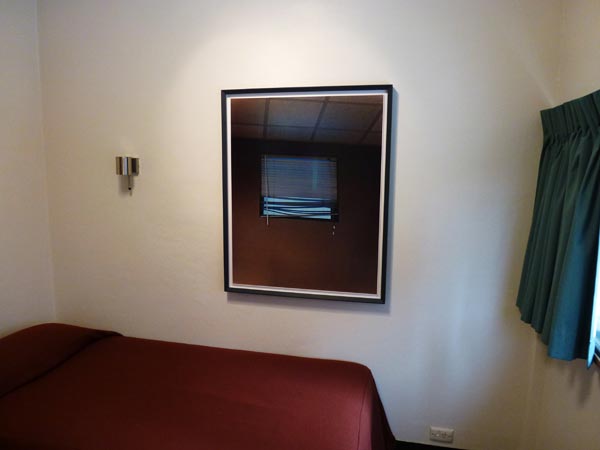
On the wall
A photograph of a window in a brown wall. The window has a cheap-looking venetian blind covering it. The lower third of the slats is dishevelled—a word normally used for hair or clothing that also works for mussed up venetians. The ceiling is standard office-commercial. Cheap. Utilitarian. All of the above is meticulously constructed from paper, photographed, then beautifully and expensively printed using an almost obsolete process called dye transfer, by Thomas Demand. The result is a slickly real image that doesn’t quite add up.
On the dresser
A tiny electric jug (everything is tiny in these rooms), a little telephone, a small bottle of wine, one glass, a laminated sheet of house information that ends predictably with…
“THIS IS A NON SMOKING ROOM
THANK YOU’
and laminated in the same hotel-room manner, a story fragment by American novelist Louis Begley…
“THE WHITE CORRIDOR WHEN
THEY ARRIVED AT
GREGOR’S FLOOR
MAKES HIM THINK OF A HOSPITAL.
HE TELLS THAT TO LENI.
She explodes in laughter and explains
how on every floor the corridor circles the building.
On some floors there are only double rooms.
This is the floor of singles.”
In the air
A fragrance designed or specified (not sure) by Miuccia Prada.
The Dailies
One circular floor, level four. Sixteen rooms. Fifteen, each with a photograph, a fragrance, a view and a fragment of story about Gregor the commercial traveller and Leni the receptionist. One room is locked, a red swing tag on the handle reading, “Please do not disturb.”
Begin
Turn the handle and push against one of the tightly sprung doors; so tightly sprung that it feels locked, until the attendant in black tells you to push a bit harder. A touch of guilt about randomly barging into a hotel room that isn’t yours, then a hint of relief in discovering that no one is there. The lunchtime city outside is soundless through the double glazing. The only sound in the room is the humming of the air conditioner through the grate in the bulkhead, sounding for a moment like a shower running in the room next door. Look at the photograph on the wall above the bed. Read the text on the dresser. Look out the window. Step back (not far in this tiny room) and frame all three—the picture, the dresser with the text, the window—in your field of vision. Turn back to the door. Turn the handle, open, realise it’s the door for the bathroom, and a slight sense of disorientation sets in.
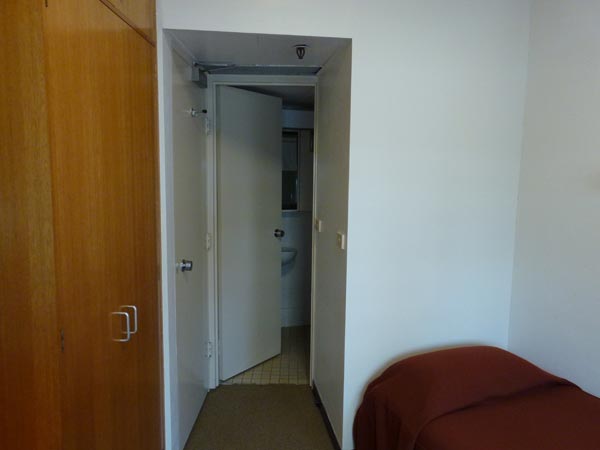
Few of us miss this point, that regardless of where you are in the world, these mean little hotel rooms, apart from all looking the same, have one other thing in common: they’re non-places. Places between other places. In The Dailies, Demand’s photographs pick up on this and push the fourth floor into another level of disengagement.
Loaded emptiness
Demand has described his subjects as simply places you pass by, things that are formally interesting (no more than that), revisited memories fixed in photography or the nuclei of narratives. The refreshingly non-interpretive John Kaldor calls them little observations in the city, and this is essentially what they are. But it’s the effect of moving through the gaps, being in-between these little stories, that draws you in to another, less worldly place. A description I once heard used for the loaded emptinesses of Berlin comes to mind and seems to fit the feeling perfectly: ghostly present absences; and picking up on the theme I did find myself doing this door-to-door visitation a bit like a commercial travelling wraith. Cut off, removed, silenced, disconnected—but at the same time hoping that the group of jabbering school kids I saw earlier had finally pissed off and left me to wander alone—to be trapped in the gaps between someone else’s story, each door opening to reveal just a sampling of what wasn’t there.
Give and take
Begley was delightful. His words played with me—and the building, and Sydney, and Australia, and readers, and Kafka, and airports, and commercial travellers and lousy little hotel rooms. Regretfully, Prada’s fragrances didn’t do a thing—but only because of the limiting effects of asthma and a cold. On the other hand, Thomas Demand seemed to be provoking a type of reflection, and presumably insight, that only comes about through displacement. Demand gives, prescribing the vision, as he says, and Demand takes, handing you the moment and at the same time cutting it away. The subject in the photograph is a construction. It has an aura of reality but at the same time it doesn’t add up. It’s the slightly disturbing, preternatural silence of the spaces that exist either side of these disconnected moments that I find overwhelmingly seductive.
Graeme Smith, RealTime 109, June July 2012

